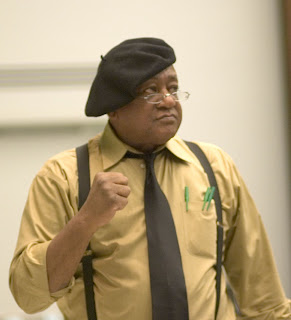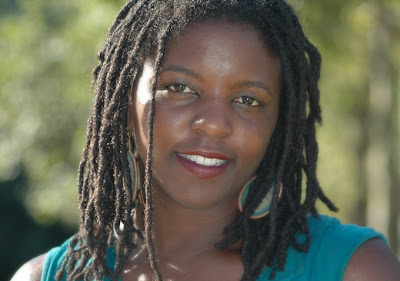KINGSTON, R.I. – The University of Rhode Island has announced the recipients of its 2012 Black Scholar Awards.
Donald Cunnigen and Yvette Harps-Logan, members of the URI Black Faculty Association, created the awards program to acknowledge and celebrate African-American students’ accomplishments. The 15th annual ceremony was held last month in the Center for Biotechnology and Life Sciences.
This year’s awards and their recipients are:
• William Gould Award for All-Around Outstanding Achievement: Mecca Smith, a junior anthropology and film media studies major from Providence, R.I. Smith has minors in international development, leadership, and nonviolence and peace studies. In her three years at URI, she has served as a student admission representative, URI 101 mentor, freshman orientation leader and peer advocate. Smith studied abroad in Belize, where she participated in an ancient Mayan excavation project.

PROUD MOMENT: Recipients of the 2012 University of Rhode Island Black Scholar Awards pose for a photo after the recent ceremony. URI Photo By Joe Giblin.
• Arthur L. Hardge Award for All-Around Outstanding Community Service: Gafar O. Odufuye, a senior mechanical engineering major with minors in nuclear engineering and Chinese from North Providence, R.I. Odufuye has served as the vice president of URI’s chapter of the National Society of Black Engineers, a tutor, and a mentor to children interested in math and science.
• Martin Luther King Jr. Award for Outstanding Leadership and Contribution to the University Community: Maria L. Beltre, a senior civil and environmental engineering major with a minor in nuclear engineering from Providence, R.I. Beltre has worked as a research assistant in URI’s Civil and Environmental Engineering Department and is a member of several student organizations, including the Society of Hispanic Professional Engineers, National Society of Black Engineers and Society of Women Engineers.
• Harvey Robert Turner Award for Outstanding Service to the University of Rhode Island Black Community: Stephane Andrade, a senior sociology and political science major from Pawtucket, R.I. He has worked as a resident advisor for the past three years, including summers, and is a member of the National Society of Black Engineers.
• Jackie Robinson and Althea Gibson Scholar-Athlete Awards: Anthony Malhoit, a URI basketball player from Waterford, Conn., and Marissa Norman, a captain of the URI women’s track and field team from Peace Dale, R.I. Malhoit will graduate with a major in psychology and minors in diversity and pluralism, women’s studies, and African and African-American studies. He is a peer advocate at URI and participates in various charity events at elementary schools. Norman is majoring in psychology and has minors in sociology and kinesiology. She is researching and working on a manuscript on drinking and driving performance.
• Noreen Coachman Award for Outstanding Achievement by an Older Student: Mitzie Johnson, a senior human development and family studies major with minors in thanatology and African and African-American studies. The Warwick, R.I. resident plans to pursue a master’s degree in family life education.
• Saint Clair Drake Award for Outstanding Scholarly Research: Justin Brown, a senior Spanish major from Providence, R.I.
• Saint Elmo Brady Award for Outstanding Achievement in Science: Nana Ama Ofei-Tenkorang, a senior biological sciences major with a minor in leadership studies from North Providence, R.I.
• David Edmonds Award for Outstanding Artistic and Creative Expression: Antaeus K. Jefferson, a senior art major from Providence, R.I.
• Estes Benson Award for Academic Achievement: Jillian Marie Winfield, a senior textiles, fashion merchandising and design and theater technology from Andover, Mass. and Rusbel Perez, a general business major from Cranston, R.I.
The ceremony also honored this year’s Rhode Island Onyx Senior Honor Society Inductees. The new members are: Stephane Andrade, Maria L. Beltre, Reumilda R. Correia, Trystan Del Tufo, Anuoluwapo Linda Famodimu, Yvens L. Faustin, James E. Fontes, Maya S. Gibbes, Robert Gilliard, Diamonde C. Goncalves, Brittany S. Hedger, Susanna O. Iwu, Antaeus K. Jefferson, Mitzie Johnson, Tetee R. Joseph, Anthony P. Malhoit, Vaughn X. Martin, Brianna N. Mays, Jasmine Middleton, Admir Monteiro, Paul F. Monteiro, Fatou A. Ndiaye, Marissa Norman, Gafar O. Odufuye, Nana Ama Ofei-Tenkorang, Kelly Oliveira, Kimberly A. Oliveira, Omolara Oriretan, Rusbel Perez, Judy L. Perry, Tonisha Pierre, Kimberly A. Pires, Timothy Quainoo, Jonathan St. John, Mecca Smith, Christie A. Theodore, Celeste G. Thompson-Roach, Nindi D. Tiemo, and Jillian Marie Winfield.
+sookie tex
This release was written by Danielle Sanda, an intern in URI’s Department of Communications and Marketing and a public relations major.
Media Contact:
Dave Lavallee, 401-874-5862 University of Rhode Island, Kingston, RI 02881, USA 1-401-874-1000
Department of Communications and Marketing Division of University Advancement Alumni Center 73 Upper College Road Kingston, Rhode Island 02881 Phone: 401.874.2116 Fax: 401.874.7872


































